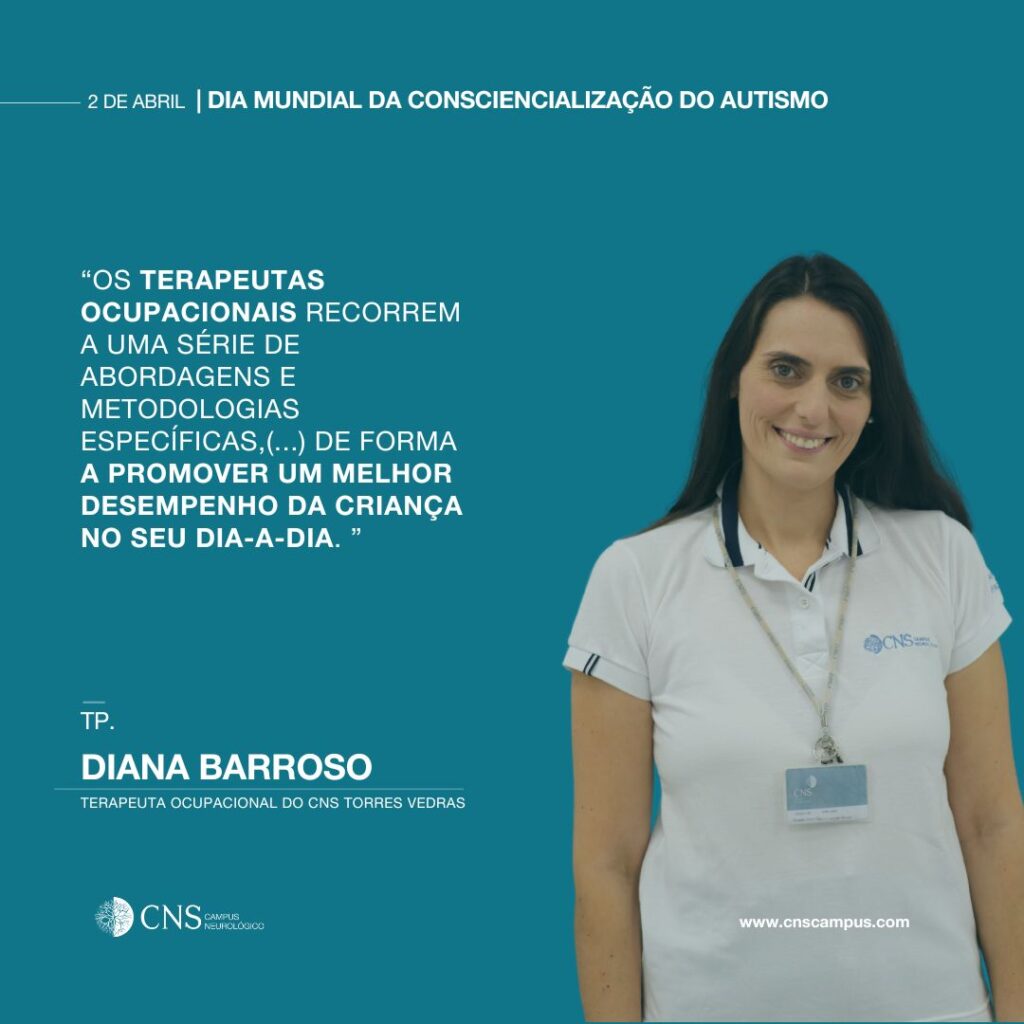Today, we mark World Autism Awareness Day.
We share an opinion article by occupational therapist Diana Barroso, in which she explains the role of Occupational Therapy in the approach to children with Autism Spectrum Disorder (ASD).
Autism Spectrum Disorder (ASD) is a neurodevelopmental disorder characterized by persistent difficulties in social interaction, verbal and non-verbal communication, and repetitive and/or restricted behaviors and interests. It can manifest in various ways, and children with autism may face a range of challenges in various life contexts, such as play, social interaction, feeding, sleep, personal care, autonomy, and learning.
Thus, we may encounter a child who: may have such restricted and repetitive play that they always play the same thing; may not tolerate the touch and pushes of other children, ending up isolating themselves during group play; may have difficulties in sports activities due to coordination issues; may present selective eating habits or compulsiveness; lunchtime at school may be a moment of great discomfort due to not tolerating the noise in the cafeteria; may have difficulties in remaining seated for long periods; may not feel the need to use the bathroom; may not know how to use the toilet, among many other challenges. These concerns, with a significant impact on the functionality and daily life of children, their families, and the school community, lead to referrals for Occupational Therapy.
Occupational Therapy is a health profession that promotes participation and occupational performance in daily life. To do so, it assesses the child’s skills (motor, sensory, cognitive, and social), the environment in which they find themselves (home, school, playground, or other), and analyzes the occupations expected for the child. Based on the concerns expressed and the evaluation results, an individual intervention plan is defined in collaboration with parents, where often the school community is also included.
Occupational therapists use a variety of specific approaches and methodologies, which may include developing the necessary skills of the child, defining strategies, making adaptations in the environment and activities, as well as consulting with families, educators/teachers, and collaborating in teams.
It is also common for children with autism to have difficulties in sensory information processing. Modulation difficulties are the most addressed, where the child may have exaggerated reactions to different stimuli (sensory hyperreactivity) or lack of reactions to sensory stimuli (sensory hyporeactivity). In addition to these, difficulties in sensory perception and discrimination, that is, the child’s ability to interpret and distinguish different stimuli, are often present, largely contributing to difficulties in knowing what to do and how to do it. This ability is called praxis and encompasses the ability to have an idea of what to do (ideation), plan the necessary actions with their body (motor planning), and execute them.
In these cases, Sensory Integration is increasingly recognized and used by occupational therapists specialized in children with ASD. This is an intervention approach, using specialized clinical reasoning and equipment that provides sensorimotor opportunities tailored to the individual needs of the child, to adjust sensory processing and integration and promote better performance of the child in their daily life.
Diana Barroso
Occupational Therapist
CNS – Campus Neurológico Torres Vedras
